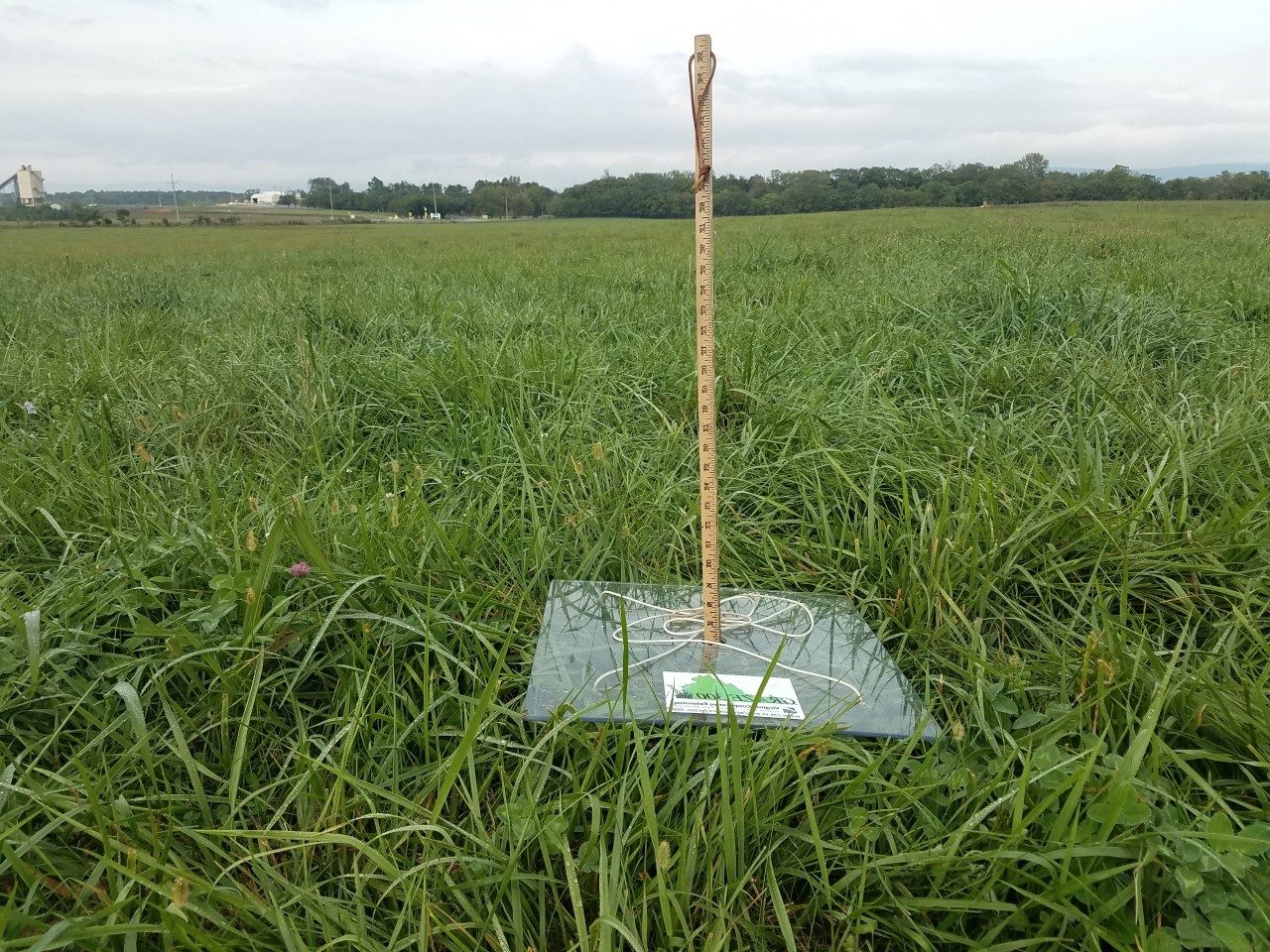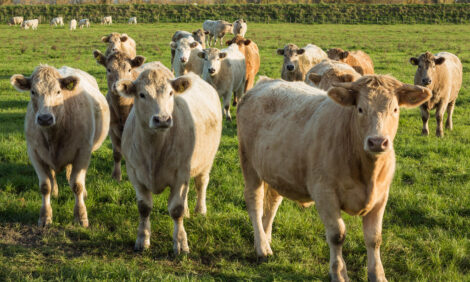



Grant beefs up grazing initiative that benefits farmers and environment
Rolling green pastures dotted with grazing cows are a common sight in Virginia. However, there’s more strategy behind those grazing cows than most people know, such as the impact on the land, water quality, and farm profitability.In 2015 a small team of Virginia Cooperative Extension agents, farmers, and representatives from state and federal conservation agencies from Northern Piedmont and Northern Shenandoah Valley created the Graze 300 VA Initiative “to enable Virginia farmers to achieve 300 days of livestock grazing per year by facilitating better pasture management and environmental stewardship.” Since then, Graze 300 VA has grown to 30 Extension agents and specialists working together with farmers across Virginia.
This year, the Graze 300 VA movement is beefing up its mission — thanks to a grant from the Virginia Tech College of Agriculture and Life Sciences Strategic Plan Advancement Integrated Internal Competitive Grants Program and the Virginia Agricultural Experiment Station. Out of 71 proposals submitted, 32 projects were funded. Graze 300 VA was the only one led by Extension agents.
Virginia Cooperative Extension agents Carl Stafford, Bobby Clark, and John Benner, and Inga Haugen, University Libraries’ liaison to the College of Agriculture and Life Sciences, are leading the program’s efforts.
The grant will help build on existing Graze 300 VA successes, research social factors that influence farmer change, provide in-depth grazing management training, develop better educational resources for Virginia’s farmers, and broaden the use of technology, including designing a grazing app to advance the Graze 300 VA initiative.
Most farmers graze about 220 days per year, from spring until fall, and supplement with hay during the four-month cold season. Winter feeding can account for more than 50 percent of production costs due to the cost of making hay. Inflation and spikes in the cost of farm equipment, fuel, and fertilizer make traditional grazing less profitable than years past. Currently, only a handful of farmers in Virginia regularly reach a 300-day grazing season.
According to the team’s background work, if 20 percent of Virginia farmers adopt better grazing management practices and extend their grazing season closer to 300 days per year, Virginia farms could increase profitability by more than $6 million per year.
“We have collected several case studies of farmers who have successfully extended their grazing season and have become more profitable,” Benner said. “We continue to share these experiences with other farmers.”
 Photo by Bobby Clark. This is a falling plate meter. It is used to measure the amount of grass in a field so farmers have more precise readings to managing their grass.
Photo by Bobby Clark. This is a falling plate meter. It is used to measure the amount of grass in a field so farmers have more precise readings to managing their grass.
A falling plate meter is used to measure the amount of grass in a field so farmers have more precise readings in managing their grass. Photo by Bobby Clark for Virginia Tech.
The team said that although Graze 300 VA could have a huge impact, getting farmers to adopt the extended grazing movement won’t be easy. Farmers’ deep-seated traditions surrounding grassland and livestock management techniques are interwoven into the fabric of these communities. For example, traditions associated with hay baling and feeding hay are a rite of passage for young people in family farming operations.
To help create strategies to encourage farmers to adopt new practices, the team recruited colleagues from the College of Liberal Arts and Human Sciences.
“We believe there are traditional barriers to adopting this new way of farming that we don’t fully understand,” said Clark. “Thus we have engaged the Virginia Tech Sociology Department to help us better understand those factors.
"Farm profitability helps to ensure that Virginia’s rural communities are resilient and vibrant,” Clark continued. “Over the long term, farm profitability is a repetitive cycle. We teach farmers more profitable technologies, and as farmers adopt these technologies, it becomes the new normal. The net benefit of this cycle ensures citizens have a safe, affordable, and consistent supply of food.”
They just need the technology to do it.
The team wants to utilize unique technologies like those developed in Ireland for improving farm and forage management. They will create similar tools that can connect with farmers and technical service providers, collect and monitor farm production data, and evaluate management decisions. This technology will integrate well with Graze 300 VA partners, the Center for Advanced Innovation in Agriculture and their SmartFarm Innovation Network (Sustainable Precision Animal Agriculture).
To create this technology, the team tapped the University Libraries’ DataBridge team to assist in scoping potential solutions and implementing a project plan. The goal is to allow Virginia cattle farmers to better capture information on their pastures and livestock and allow for more efficient use of their land and extend the grazing season further into the year. Essential data such as paddock usage to indicate cattle rotation, cattle health, and biologics will be considered for the app.
“This app can have a big impact on Virginia farmers,” said Jonathan Briganti, the manager for DataBridge. Briganti will scope “the diverse climate, cattle breeds, and workflows seen in American farms." Such an effort requires a deeply researched and carefully executed plan, which is why the principal researchers work methodically to bring the right domain experts in the room, Briganti added.
The application will assist producers tracking and managing forage output and grazing to reduce feed costs and improve environmental quality.
Extending the grazing season also has environmental and production benefits. In well-managed pastures, the sod is thicker. This reduces runoff, soil erosion, and nutrient losses. Therefore, farmers use less fertilizer. Additionally, because thicker sod captures more water in sudden rainfall events, the pastures are more productive during dry summers when occasional storms are the only source of moisture.
The team is also partnering with farmers, agribusinesses, and several agencies to improve water quality. According to Clark, extending the grazing season will improve water infiltration, nutrient use efficiency, and soil organic matter while encouraging fewer barren areas in fields. A longer grazing season also reduces the amount of sediment, nitrogen, and phosphorus that ends up in surface waters that could eventually run into streams and rivers.
“It’s economics and environment and doing what is best for the landscape," said Haugen, who was a grazing dairy farmer before she was a librarian. "A type of farming that works on flatlands, like vegetable or crop farming, might be a poor choice in the mountains. This program works with what folk are doing and helps them to be better in many areas. It benefits them and our communities that share the water, air, and soil, and then also our downstream neighbors.”
“This is the extension/outreach component of land-grant universities,” Clark said. “In this case, Virginia Cooperative Extension is helping to address three major issues across the commonwealth: ensuring a safe, affordable, and consistent food supply, helping Virginia sustain resilient communities, ensuring environmental health and stewardship, and ensuring water quality.
“This is a big deal,” Clark continued. “This initiative is improving farm profitability, environmental issues, and water quality. An enormous challenge the world faces is finding ways to have good water quality or improve water quality that do not cause a major financial burden on people or industry. In this case, we are achieving both better water quality and better farm profitability. It is a win-win situation.”
The team is seeking collaborators interested in helping with the Graze 300 VA Initiative. People interested in testing the app, learning more about grazing, supporting students in learning about data and grazing, or have questions in general are welcome to contact Haugen.
Photo by John Benner for Virginia Tech.
TheCattleSite News Desk


